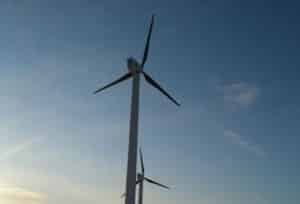
ANCHORAGE – Governor Bill Walker and Lieutenant Governor Byron Mallott Wednesday welcomed White House support for cleaner, more affordable energy in rural Alaska.
The White House’s Clean Energy Solutions for Remote Communities call-to-action, launched yesterday, calls on the wider investment community to help identify creative, collaborative ideas for financing clean energy in remote communities, with a focus on rural Alaska.
In some Alaska villages, families spend 50 percent or more of their household budget on energy.
“You’d think with all our resources, we’d have low-cost energy in Alaska, but that’s just not the case,” Governor Walker said. “I want to find solutions that work for Alaskans.”
Alaska has demonstrated leadership and commitment in this arena through the state’s Renewable Energy Fund and Emerging Energy Technology Fund, which finance innovative and practical solutions to Alaska’s energy challenges. Yesterday’s White House announcement recognizes that leadership:
“Renewable energy, energy efficiency, microgrid technologies, energy storage, and other aspects of clean, smart energy systems have made significant advancements in recent years, and Alaska has already emerged as a leader in many of these areas.”
The White House announcement follows a September 1 roundtable convened by Governor Walker, Lieutenant Governor Mallott, and high-level White House officials. That meeting brought together state and federal energy and finance officials to discuss opportunities for collaboration in advancing cleaner, cheaper energy in rural Alaska.
Following are a few key takeaways from the discussion:
• Solutions have to come from communities themselves. Energy and infrastructure systems must meet local conditions and allow for local operation and maintenance. Affordability is key. Community leadership throughout is critical.
• High costs are a barrier to private investment. Because of the small population base, the cost per consumer of deploying any new system is extremely high – more than five times that of the lower 48 in one energy cooperative’s experience. Financing is a significant challenge.
• Total cost of ownership must be considered when evaluating potential energy projects, not just initial construction. Support for operations and maintenance is essential.
• Sustainability of villages must be addressed holistically. The health of the population is connected to the price and availability of energy, clean water and sanitation; subsistence opportunities; economic opportunity; and self-reliance. Alaska’s people are our greatest resource.
State energy leaders also requested federal support for Alaska’s Emerging Energy Technology Fund, which is developing and testing innovative solutions with potential for global relevance.
Dr. John Holdren, Director of the White House Office of Science and Technology Policy, conveyed the Obama administration’s commitment to helping Alaska find win-win solutions to reduce the cost of energy in rural Alaska while reducing pollution and climate change impacts.
Lieutenant Governor Byron Mallott underscored the administration’s commitment to working with local leaders: “Governor Walker has said we are going to emphasize openness and transparency, and hearing and heeding the voice of Alaskans. We will work hard at that and I look forward to doing that with you.”
Governor Walker expressed optimism that with improved support and collaboration, Alaskans can find solutions to our energy challenges: “We have some of the most creative and bright people in Alaska, because you just don’t survive if you’re not, especially in rural Alaska.”
The Walker-Mallott administration has placed a high priority on making energy more affordable throughout Alaska.
Source : State of Alaska
[smoothcategory catg_slug=”state”]
